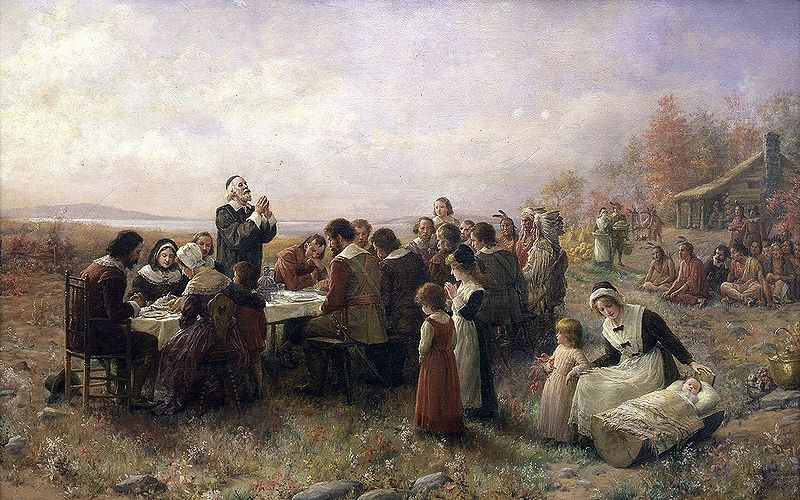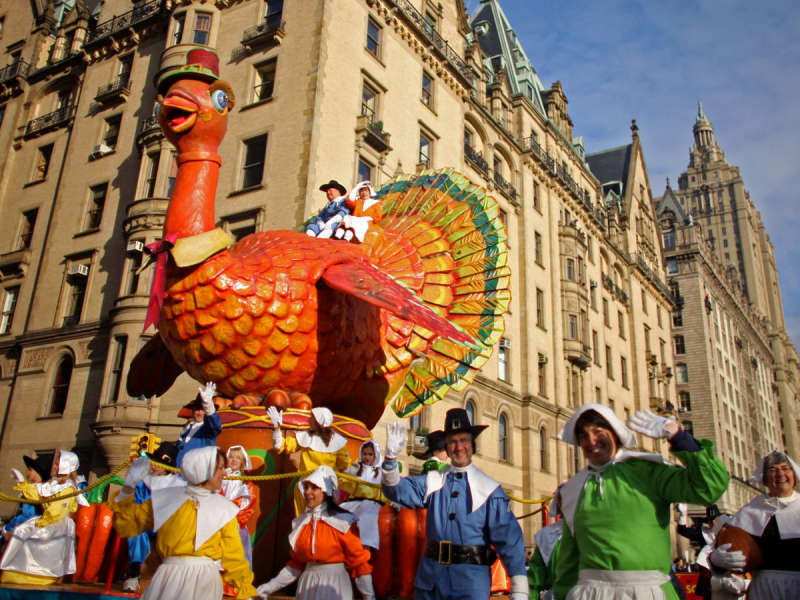Thanksgiving Becomes a National Holiday
In order to commemorate the end of a protracted drought that had threatened the year's harvest and prompted Governor Bradford to order a religious fast, the Pilgrims held their second Thanksgiving celebration in 1623. Other New England settlements also adopted the custom of annual or sporadic days of fasting and thanksgiving.
The Continental Congress established one or more days of thanksgiving each year during the American Revolution, and in 1789 George Washington issued the first Thanksgiving proclamation by the national government of the United States. In it, he urged people to express their gratitude for the successful ratification of the U.S. Constitution and the successful conclusion of the country's war of independence. During their presidencies, his successors John Adams and James Madison also established days of thanksgiving.
In 1817, New York became the first of several states to formally adopt an annual Thanksgiving holiday; however, each state observed the holiday on a different day, and the American South remained largely unfamiliar with the custom.
Sarah Josepha Hale, the noted magazine editor and prolific writer who wrote the nursery rhyme "Mary Had a Little Lamb" among many other things, launched a campaign in 1827 to establish Thanksgiving as a national holiday. For 36 years, she wrote editorials and wrote letters to governors, senators, presidents, and other politicians, earning her the moniker "Mother of Thanksgiving."
At the height of the Civil War, in 1863, Abraham Lincoln finally complied with her request by urging all Americans to pray to God in order to "heal the wounds of the nation" and to "commend to his tender care all those who have become widows, orphans, mourners or sufferers in the lamentable civil strife." Thanksgiving was observed every year on the last Thursday in November as he had planned until 1939 when Franklin D. Roosevelt moved the holiday up a week in an effort to boost retail sales amid the Great Depression. After fierce opposition to Roosevelt's plan, which was mockingly dubbed Franksgiving, the president reluctantly agreed to sign legislation making Thanksgiving fall on the fourth Thursday of November in 1941.







